
With Rome’s history spanning at least 28 centuries, you can bet your travel booties that it’ll take longer than a couple of days to fully experience its majesty. If you're arriving into Rome by plane, you can hop on a train at Fiumicino Airport that will take you directly to Rome Termini train station. Once you get to Rome there are countless things to see, do, and eat. Here we highlight 30 things to do in Rome you can't miss.
Things to do in Rome - the must-sees
These Rome tourist attractions are famous for a reason: they’re not only extraordinary feats of architecture and art but also a testament to the ingenuity and innovative spirit of the human mind. So lace up your sensible walking shoes and don your secure backpack with the requisite bottle of water and snacks, and brave the crowds. Trust me, it’s worth it.
1. Gone to ruins…
The Roman Forum and Palatine Hill are part of the same archeological area and count as one admission. According to Roman mythology, Palatine Hill is the spot where Romulus and Remus were found and kept alive by the she-wolf Lupa. Rome originated in this area – excavations on this site have found ruins going back to the 10th Century. The Forum was the original marketplace in Rome and has ruins dating back to the 6th Century B.C.
2. In the Colosseum…
Probably the most famous tourist attraction in Rome, the colosseum is the largest amphitheatre ever built and dates from around 80 AD. It was used for all sorts of entertainment, from plays based on classical mythologies to gorier spectacles such as gladiator contests, animal hunts and executions. Imagine: a crowd of around 65,000 all cheering someone on to their death. I don’t know about you, but I think I prefer the less blood-thirsty sightseeing crowds of modern Rome…
3. Temple of all the gods
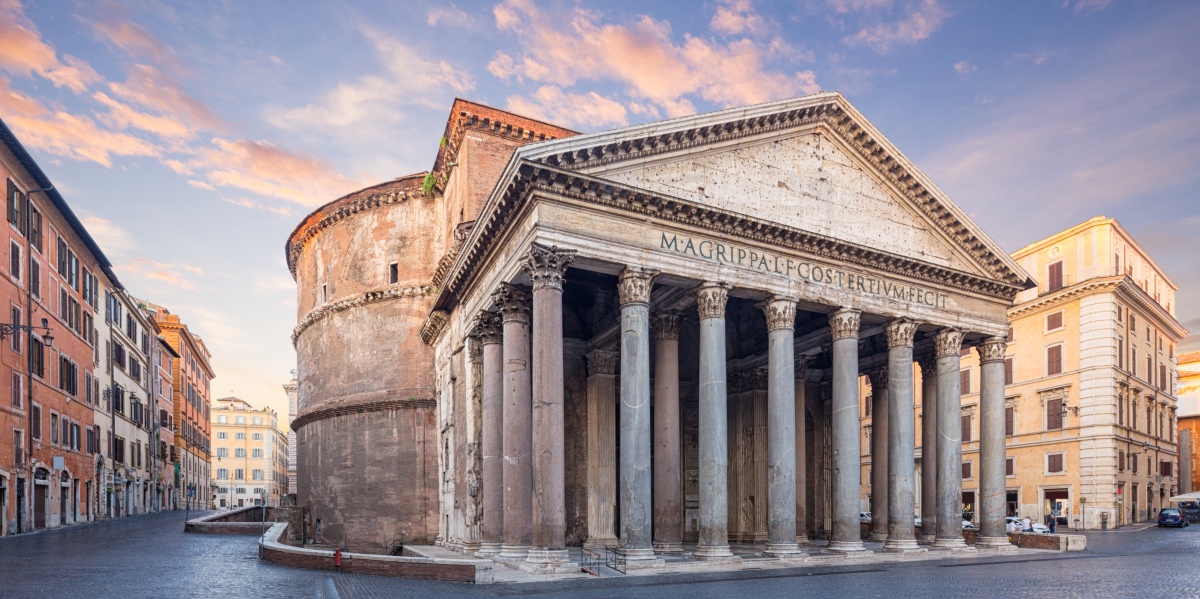
The Pantheon, or temple of all the Gods, was a Roman Temple built between 113 to 125 AD. It’s one of the best-preserved buildings of Ancient Rome, probably because it has been in constant use; it’s now a Catholic church dedicated to St. Mary and the Martyrs. The Pantheon still sports the world’s largest unreinforced concrete dome, with light filtering in through a central opening to the sky. If you’re visiting during the summer, chances are you’ll witness one of the frequent summer storms through the opening.
4. Visit the largest church in the world
St. Peter’s Basilica had all the big-name artists working on it at the time, including of course, Michelangelo and Bernini. Rumour has it that the tomb of St. Peter himself is directly below the high altar. When visiting take special note of Bernini’s colonnade outside as well as his exquisite canopy over the papal altar, or baldachin, inside. To see Michelangelo’s contribution, simply look up: he’s responsible for the eastern end of the Church with the huge dome in the center.
5. Relax in the Piazza Navona
Now it’s time to relax a minute along the edge of yet another one of Bernini’s fabulous fountains. Stop, grab a drink at one of the cafés lining the squares and enjoy the hustle and bustle of one of the most iconic places to visit in Rome. Or, if you’re tired of the hot Italian sun, head underground to an archeological dig of the stadium of Domitian.
6. Climb the Spanish Steps!
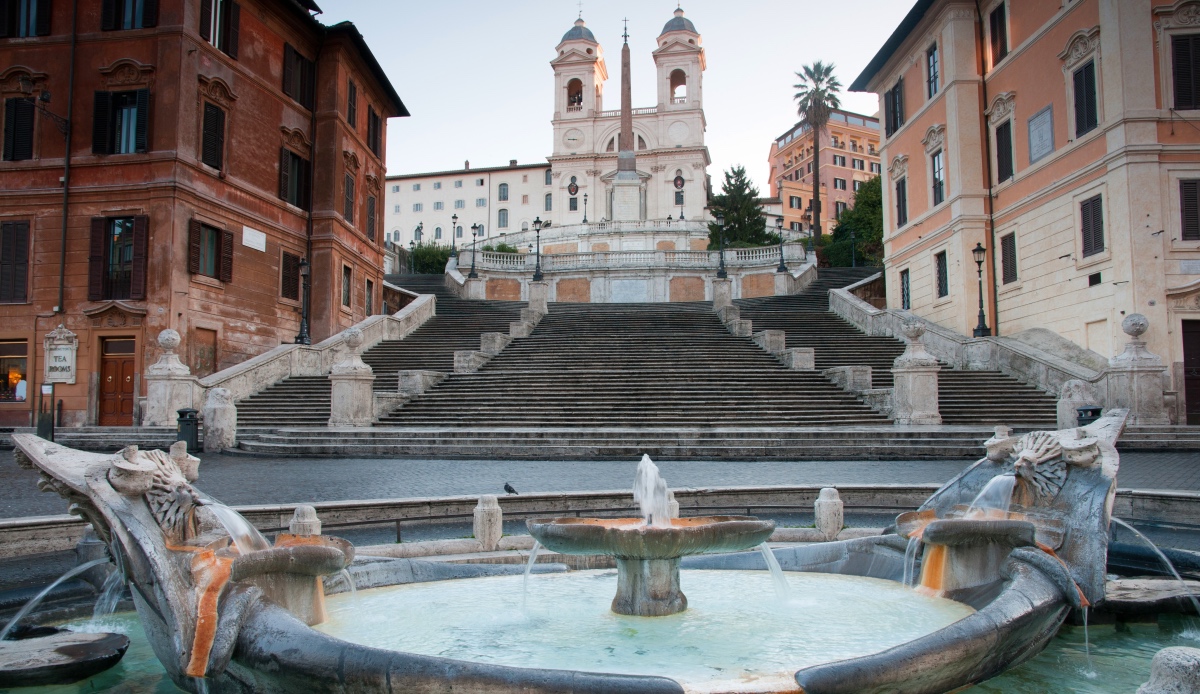
The Spanish steps is a beautiful stair case of 138 steps built in 1723 to link the Piazza di Spagna below to the Piazza Trinità dei Monti above. Although it’s a destination in itself, take the opportunity to enjoy the shopping on the Via Condotti or if you are a fan of the romantics, visit the John Keats museum, located in the house where the poet lived and died in 1821.
7. Touch the hand of god…
Or at least look up and watch Michelangelo’s Adam do it! No trip to Rome is complete without a visit to the Vatican museums, which include the Sistine Chapel and Michelangelo’s famous ceiling. But don’t forget to take a look at all the other 54 galleries of amazing art collected by the Popes over the centuries.
8. The chiaroscuro of Caravaggio
After your rest in the Piazza Navona, why not talk a short walk over to San Luigi dei Francesi church and experience three masterpieces from the 16th Century painter/provocateur himself. Caravaggio was known for his exquisite contrasting of shadows and light in his paintings. (He was also known as a violent, easily-provoked murderer, but that’s another story…) It’s truly an experience to see this paintings in their original setting. You can also check out his work in Santa Maria del Popolo off the Piazza del Popolo beside works by Raphael and Bernini, among others.
9. Need more art?
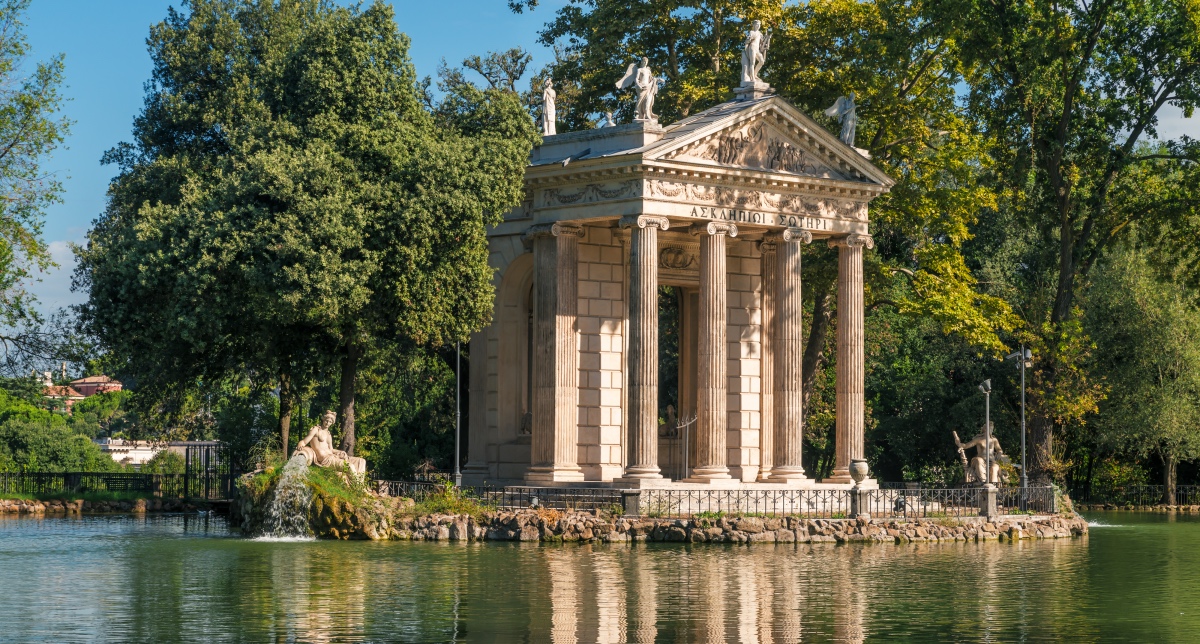
Look no further than the Galleria Borghese! Housed in the Villa Borghese and surrounded by beautiful gardens (now a separate attraction). It includes major collections of Caravaggio, Raphael, Titan, Bernini as well as many works of ancient Roman art.
10. Nero’s Vision
The Domus Aurea is a huge, landscaped palatial pavilion designed by Emperor Nero in the 1st Century near Palatine Hill and a testament to extraordinary taste and design. It’s only open on weekends as the site is still under excavation, but the price of admission comes with an excellent guided tour.
Things to do in Rome - the must-dos
Now that you’ve seen Rome’s most famous tourist attractions, what else is there to do in Rome? Here are a few suggestions to help you get the most out of your trip!
1. Retrace your favorite Roman movie on a Vespa!
This is your chance to ride a Vespa through Rome while retracing the steps of some of the most iconic movies set in the Eternal City. Both Bici&Baci or Scooteroma Tours cinema-themed tours offer some good tours. Or, if you’re a movie buff but the idea of scootering around the crazy streets of Rome scares you silly, check out cultural project Cinecittà where you can visit some of the permanent Roman sets.
2. Porta Portese’s flea market and the Trastevere District
Every Sunday from 6 a.m. to 2 p.m. the Porta Portese in the Trastevere neighborhood is filled with stalls selling almost anything under the sun: from rare books and vintage vinyls to antiques, fabrics, clothes and home accessories, both secondhand or new. The best bargains are for early visitors so make sure to set your alarm! After the market, spend some time roaming the neighborhood’s cobblestoned streets which are filled with funky boutiques, eateries, bars, and clubs.
3. Walk Janiculum Hill
While in the Trastevere district, make sure to take the leisurely stroll up to Janiculum Hill. Although a bit of a hike, you’ll get an amazing view of the city as well as a unique lens on Roman history through the various monuments, including the equestrian statue of Garibaldi, the canon (which is shot every day at noon), and the promenade lined with 84 statues of Roman heroes.
4. Get thee to a gladiator fight!
Well, at least a re-enactment of one. The Gruppo Storico Romano (Roman History Group) performs amazing gladiator battles. Not happy sitting on the sidelines? Sign up for gladiator school! A two-hour workshop will allow you to fulfill all your Spartacus dreams!
5. Visit Pasquino, Rome’s talking statue
The Hellenistic statue dating from around 3rd Century B.C. doesn’t actually talk (because that would be really creepy) but its base has been used for centuries as a place to post pasquinate or pasquinades, political writings, poems or lampoons criticizing the government or the church. You can visit him in his very own square, the Piazza di Pasquino, not far from the Campo de’ Fiori.
6. Mouth of Truth
Head to Santa Maria di Cosmedin church, along the Tiber’s bank where the ancient Forum Boarium (cattle market) stood and stick your hand in the mouth of a huge round marble mask thought to be the sea god Oceanus. The Medieval version of a romantic lie detector, legend has it that if you stick your hand in its mouth it will be able to test your fidelity to your partner.
7. Throw a coin in the Trevi fountain
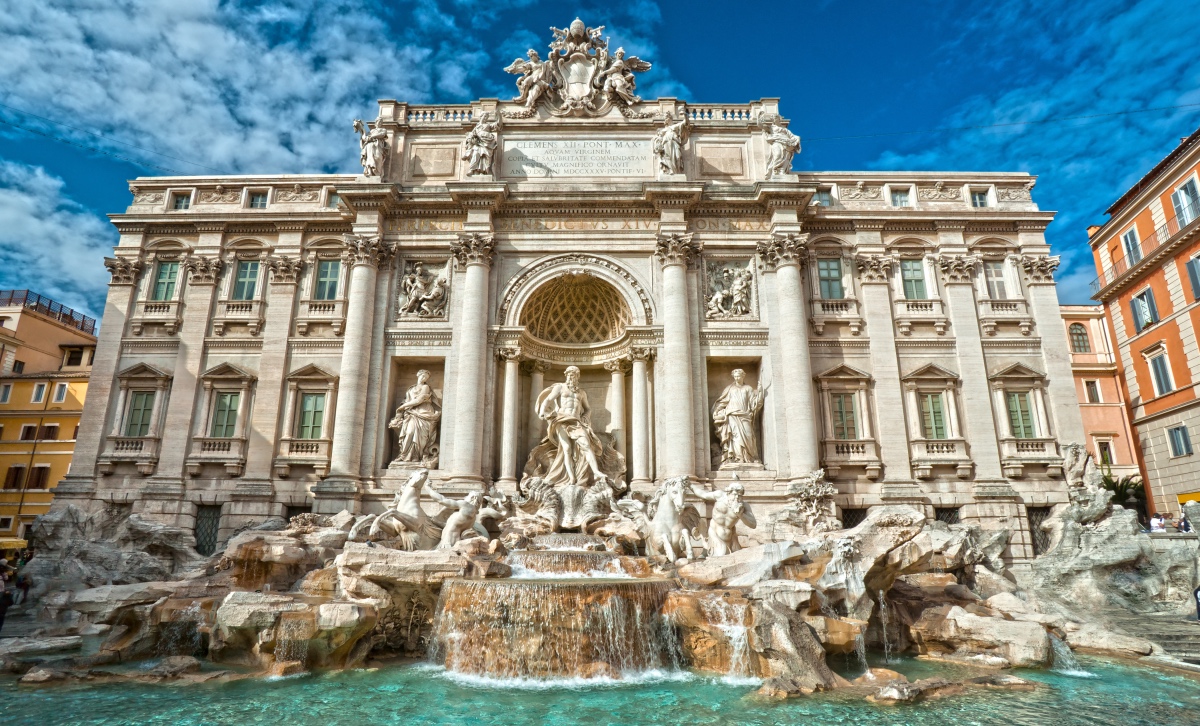
Yep. Wonderful, old Bernini again. Legend has it that if you throw a coin with your right hand over your left shoulder into the fountain, it will guarantee your return to Rome in the future. Throw a second coin in the same way and it will bring romance your way, while a third will lead to marriage — so be careful what you wish for! Don’t forget to turn around and look at the fountain though; Bernini is always worth a stop and gaze.
8. Support local producers at the Campagna Amica market
Only open on Saturdays and Sundays from 10:30 a.m. to 7 p.m., this covered market near the Circus Maximus is a showcase for local Lazio farmers as well as the surrounding regions of Rome. Here you’ll get the most amazing seasonal produce, honey and olives the region has to offer. Not only will it be heaven for your taste buds, you also get to support the local economy and the environment.
9. Meander the Montì neighborhood
This is where you’ll find the Domus Aurea mentioned above as well as Trajan’s markets. It’s Rome’s most bohemian, eclectic neighborhood, with funky vintage boutiques, hip wine bars and lovely little trattorias. Take a break from the tourist throngs and window shop through its cozy streets.
10. Picnic in the park
Phew. You must be getting tired, after all that walking. Why not pick up a few of the Roman delicacies below and head to one of Rome’s beautiful parks? Some top choices would be the Villa Borghese, Villa Pamphili or Villa Ada. Or if you want a more deluxe experience, why not order a full picnic basket like the ones offered by Vivi Bistrot.
Things to do in Rome - the must-eats
You can’t go 28 centuries without building a rich and diverse culinary history. Out of Rome’s many attractions, its amazing Roman food ranks high on the list.
1. Pizza al taglio
How can you visit Rome without tasting its premier street food, Pizza al taglio? Pizza can means a lot of different things in Italy, but Pizza al taglio (or pizza by the slice) is distinctly Roman. It consists of large sheets of dough with different toppings that the vendor will either cut with a knife or scissors to your desired amount. It’s no frills, no gimmicks, pure deliciousness.
2. Trapizzino
Not content with the basic pizza? Need to fancy it up a little? Why not try a Trapizzino? A relatively new invention by Mister Pizza experimenter himself, Stefano Callegari, a trapizzino is thick triangle-shaped wedges of pizza stuffed with Roman culinary classics such as meatballs, tongue with green sauce or chicken cacciatore. A friendly suggestion: make sure you’re hungry before eating… and do not wear white.
3. Maritozzo
The staple of Roman pastries, a maritozzo is perfect for breaking the fast with an espresso, or soaking up the chianti after a late night. It’s a not-too-sweet, baked oval bun made from flour, eggs, butter, honey and salt. The name is rumored to come from marito — or husband in Italian. It’s an old local custom for young men to offer a pastry with a ring inside as an engagement vow. Get your Maritozzo at most bakeries (though you will have to supply the bling yourself).
4. Carbonara

It’s simply wrong to visit Rome without tasting an authentic carbonara. The ingredients are simple: egg yolks, guanciale (a cured meat made from pork jowls or cheeks), black pepper and pecorino cheese. To make sure you get the ‘real carbonara’ ( and not one that has been ‘polluted’ with cream or onion) head to Roscioli, Cesare al Casaletto or Armando al Pantheon.
5. Cacio e pepe
The Roscioli, also serves up an exceptional cacio de pepe, as does Da Felice. Let’s break this down, shall we? Cacio refers to Pecorino Romano, (an aged sheep’s milk cheese). Pepe simply means pepper. Mixed with some homemade pasta? Divine!
6. Alesso di Bollito
Head to Mordi E Vai in the Testaccio market to try one of Rome’s truest, local dishes: Alesso di Bollito, or a simmered beef dish. It’s served on bread, dipped in the meat’s juices.
7. Gelato
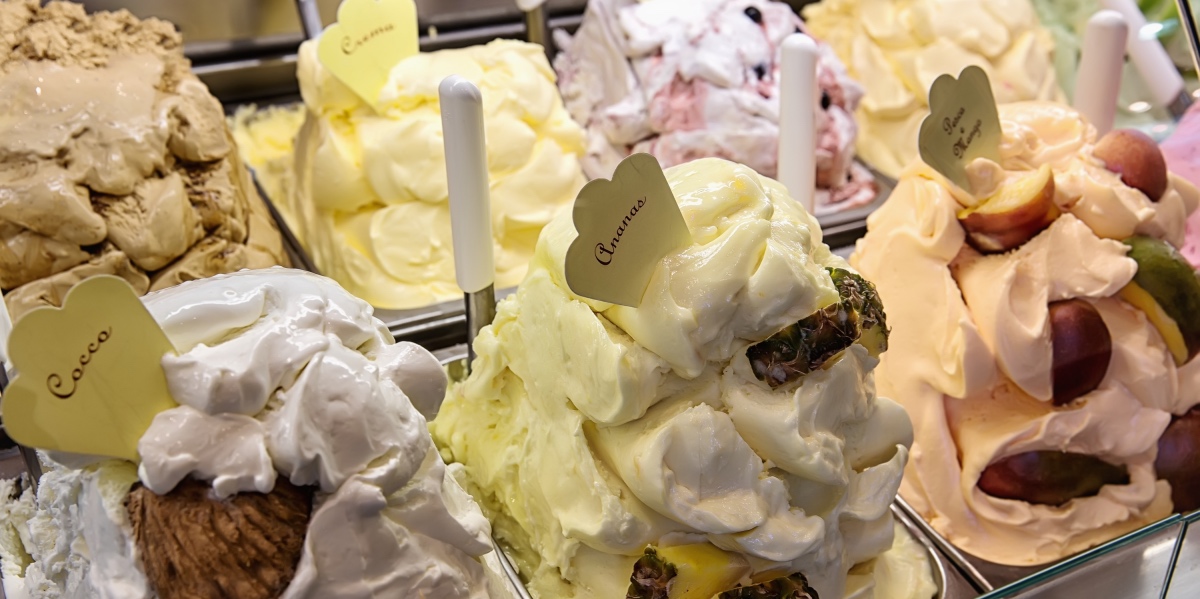
Need I say more? Although Rome has many gelaterias, not all of them are excellent. Stick to the ones that use only natural ingredients (most shops post the ingredients). Good choices are places like Fior de Luna, Fatamorgana and Otaleg.
8. Supplì
Feeling a little peckish? Need a pick-me-up to get you through your afternoon of sightseeing in Rome? Why not pick up a Supplì? A fried rice ball mixed with ragù and mozzarella, the Supplì might be the ultimate comfort food, not to mention the Roman version of the powerball for tourists.
9. Quinto Quarto (offal) – not for the faint of heart …or vegetarians
Head down to the Mercato Testaccio where for most of the 20th Century you would find some of the city’s largest slaughterhouses. Quinto quarto refers to the ‘fifth quarter’ of the animal, or the offcuts, such as sheep intestines, tripe and tongue the workers used to be paid with in kind. Italians are nothing if not resourceful and over time came up with new and delicious ways to serve these cuts. Quinto quarto, such as tripa alla romana (tripe served with a tomato sauce and pecorino cheese) is still some of the most popular cuisine in Rome.
10. Fiori di Zucca
Let us end our food section on a more floral note. Fiori di Zucca are zucchini flowers stuffed with mozzarella and anchovies, wrapped in batter and then fried. Beautiful and delicious! Head over to Emma’s for a sample — anchovies optional!
What are you waiting for? Book your tickets now!


